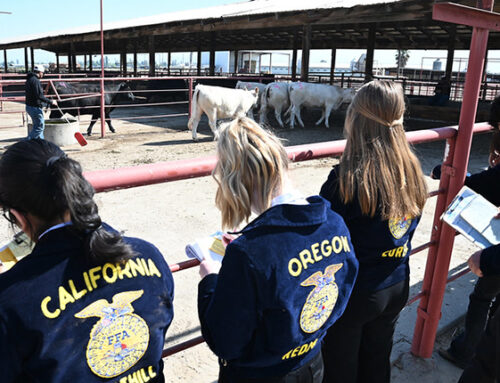The new state budget provides the California State University system – and California State University, Fresno – with essentially the same level of state support as last year. But with a record enrollment and increasing costs, Fresno State will experience a serious funding gap as it works to preserve academic quality and access.
Fresno State President Dr. John D. Welty said the university’s state funding for 2008-09 is approximately $153.6 million, compared to $153.7 million last year.
Enrollment rose to a record 22,600 this fall, and without additional state funding to support the costs to educate more students, the university must take steps to reduce expenditures.
Looking ahead, enrollment will have to be curtailed, Welty said. “That’s an unfortunate reality,” he added, “when Central California – the region being called The New California – is growing and needs the nurses, teachers, businesspeople, engineers and other key professionals that Fresno State produces.”
Welty said he and campus administrators anticipated a budget shortfall and have taken preliminary steps to curtail 2008-09 spending. He said it will be difficult year, but faculty and staff are committed to maintaining Fresno State’s academic quality and programs.
“We say that Fresno State is ‘powering’ the New California and we intend to continue providing the power to move the region ahead through highly trained, resourceful graduates,” Welty said.
The final CSU budget consists of $2.97 billion from the state General Fund and $1.5 billion from student fee revenue. The budget is $215 million below CSU’s operational needs for 2008-09, according to the inflation and enrollment growth calculations by the Governor’s Department of Finance.
“We are appreciative of the Governor and Legislature for keeping intact our budget as presented in the May Revision, in spite of a worsened fiscal condition in the state,” said CSU Chancellor Charles B. Reed. “Although we still face a serious funding gap, the CSU is committed to preserving academic quality and academic programs that are of high priority for the social and economic well being of California.”
The budget provides no funding for enrollment growth, intensifying a trend that began in 2005-06, in which student enrollment grows faster than state funding. In response, CSU campuses have increased class sizes when possible, and opened more course sections with temporary faculty appointments. To protect educational quality in the face of these funding challenges, CSU campuses will slow down enrollment growth by closing the freshmen application period for fall 2009 earlier in the cycle.
“Enrollment restrictions hinder the opportunities for students from all communities to obtain a college education,” Reed said. “The pipeline of students in K-12, is two-thirds students of color, who have a critical need to attend college. Many of these students will be negatively impacted if the State is unable to restore adequate funding for higher education next year.
To maintain high academic quality while absorbing state budget cuts, the Board of Trustees in May, agreed to increase the annual student fees as follows: $276 for undergraduate students, $324 for teacher credential students and $342 for graduate students. The 10 percent increase will generate approximately $73 million, after providing for additional financial aid to eliminate the fee increase for the neediest students.
Even with the increase, CSU fees continue to be among the lowest in the country. The undergraduate State University Fee was increased from $2,772 to $3,048 per year. Including the approximate average campus fee of $749, CSU undergraduate students are paying approximately $3,797 for one academic year, which is less than the lowest fee of public institutions used to benchmark the CSU.
In the absence of a state funding increase, revenue from the fee increase must be used primarily for expenditures that the CSU must make in 2008-09 to meet various obligations, including escalating energy costs and employees’ health insurance premiums.



